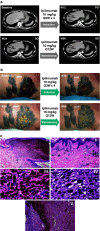Ipilimumab experience in heavily pretreated patients with melanoma in an expanded access program at the University Hospital of Siena (Italy)
- PMID: 21170646
- PMCID: PMC11029675
- DOI: 10.1007/s00262-010-0958-2
Ipilimumab experience in heavily pretreated patients with melanoma in an expanded access program at the University Hospital of Siena (Italy)
Abstract
Aim of study: To evaluate the feasibility of ipilimumab treatment for metastatic melanoma outside the boundaries of clinical trials, in a setting similar to that of daily practice.
Methods: Ipilimumab was available upon physician request in the Expanded Access Programme for patients with life-threatening, unresectable stage III/IV melanoma who failed or did not tolerate previous treatments and for whom no therapeutic option was available. Induction treatment with ipilimumab 10 mg/kg was administered intravenously every 3 weeks, for a total of 4 doses, with maintenance doses every 12 weeks based on physicians' discretion and clinical judgment. Tumors were assessed at baseline, Week 12, and every 12 weeks thereafter per mWHO response criteria, and clinical response was scored as complete response (CR), partial response (PR), stable disease (SD), or progressive disease. Durable disease control (DC) was defined as SD at least 24 weeks from the first dose, CR, or PR.
Results: Disease control rate at 24 and 60 weeks was 29.6% and 15%, respectively. Median overall survival at a median follow-up of 8.5 months was 9 months. The 1- and 2-year survival rates were 34.8% and 23.5%, respectively. Changes in lymphocyte count slope and absolute number during ipilimumab treatment appear to correlate with clinical response and survival, respectively. Adverse events were predominantly immune related, manageable, and generally reversible. One patient died from pancytopenia, considered possibly treatment related.
Conclusion: Ipilimumab was a feasible treatment for malignant melanoma in heavily pretreated, progressing patients. A sizeable proportion of patients experienced durable DC, including benefits to long-term survival.
Figures



References
-
- Chandy BK. WHO—Facts Sheet: health consequences of excessive solar UV radiation. Kuwait Med J. 2006;38:254–258.
Publication types
MeSH terms
Substances
LinkOut - more resources
Full Text Sources
Other Literature Sources
Medical
Research Materials

